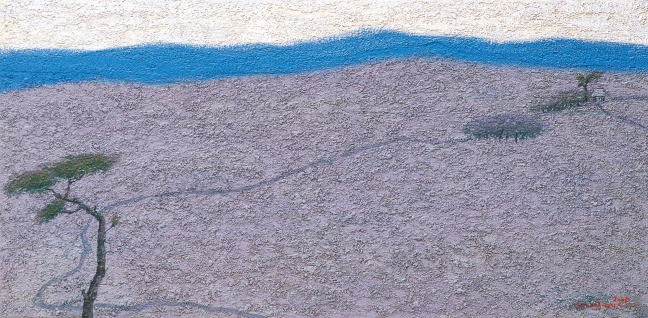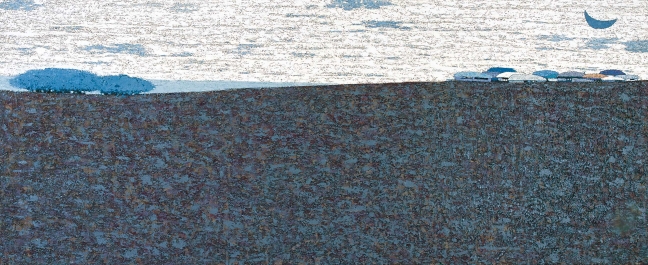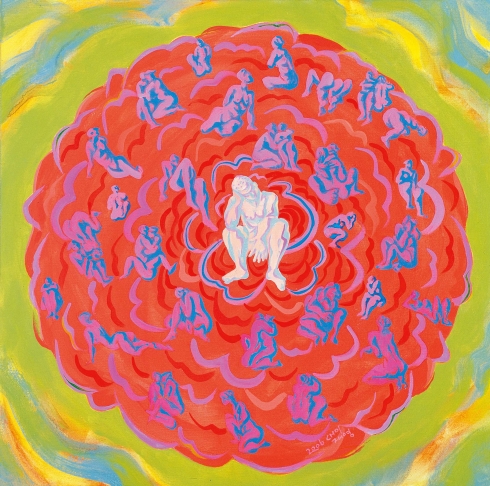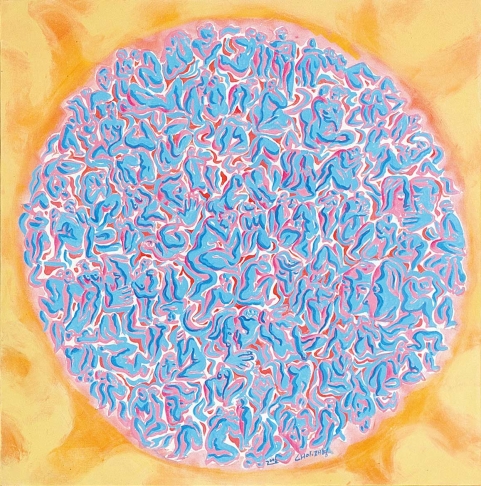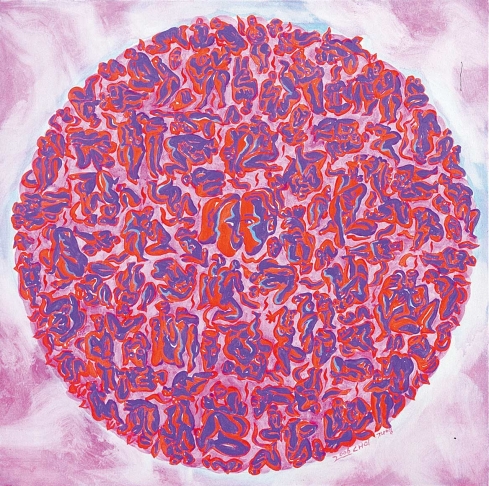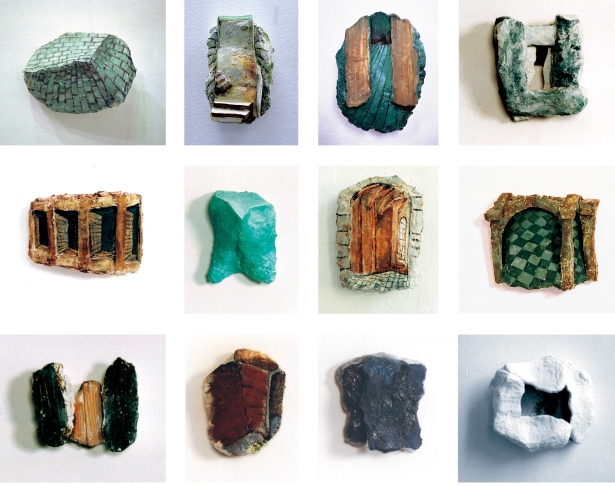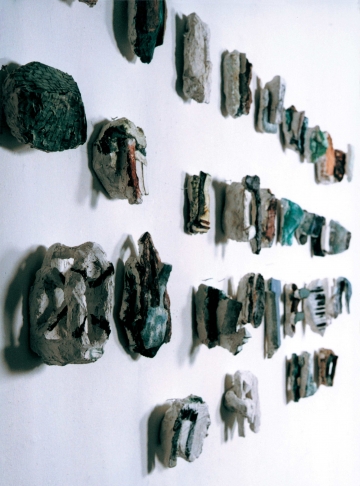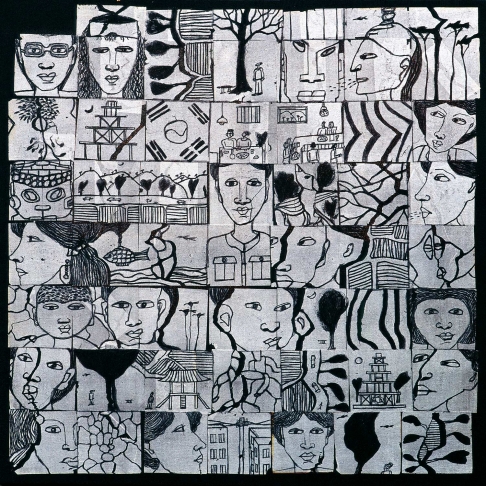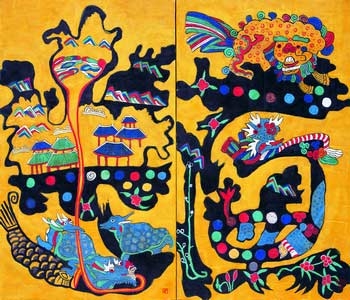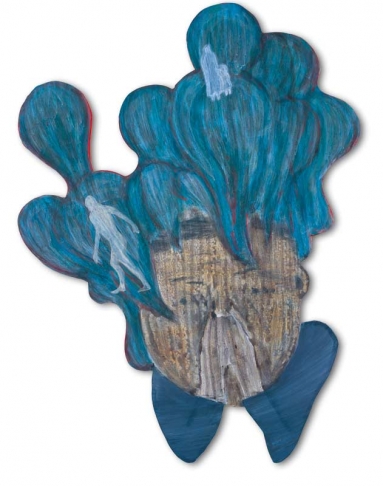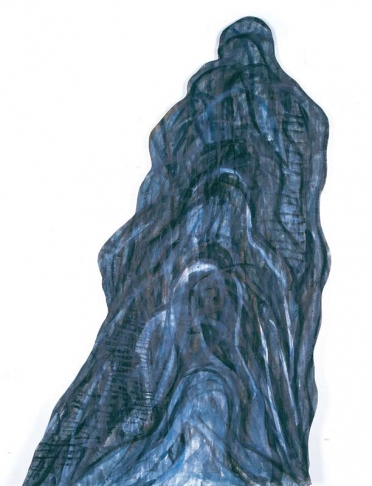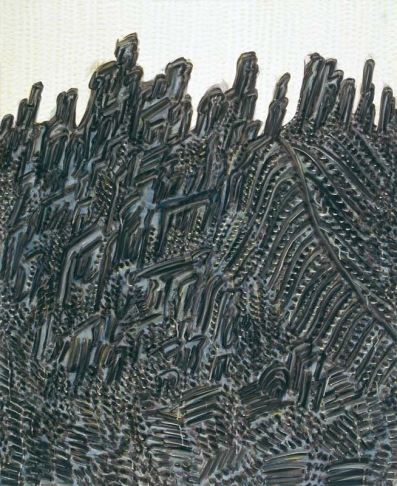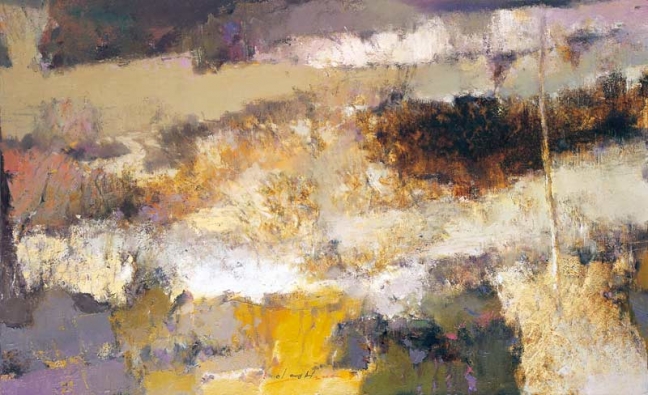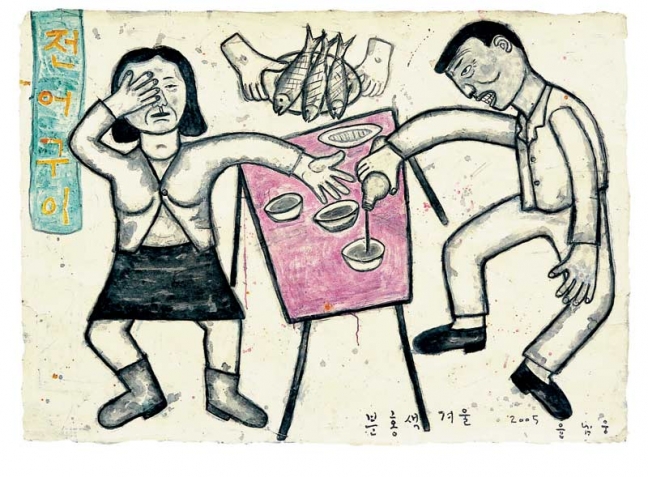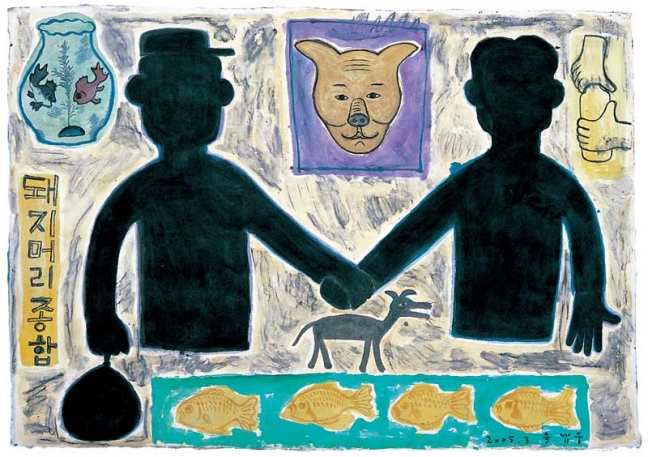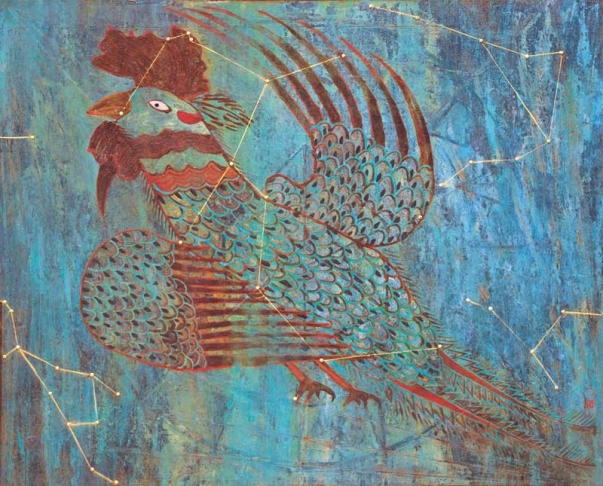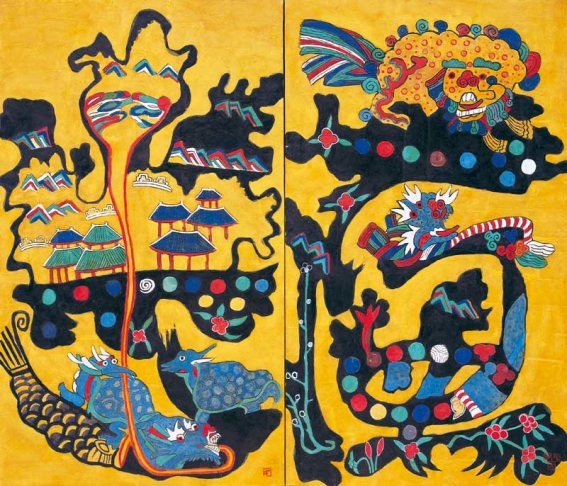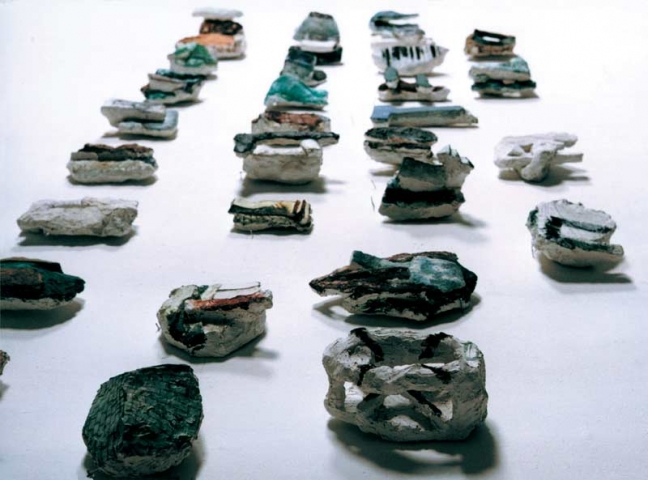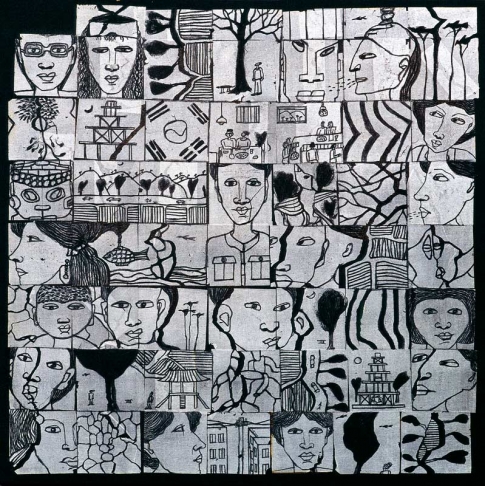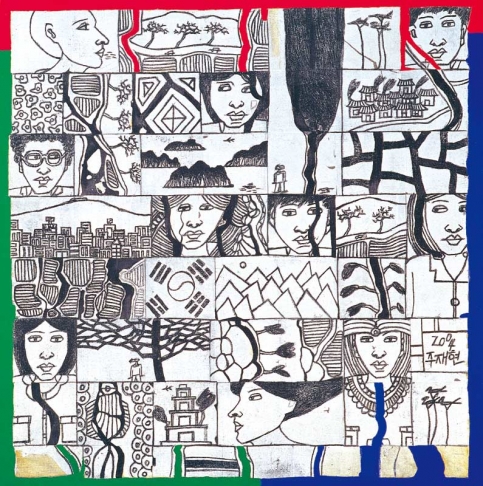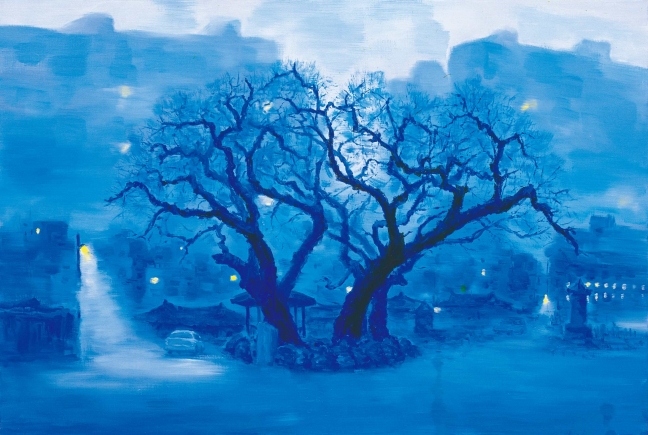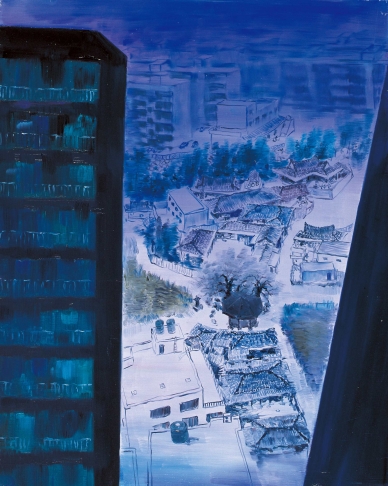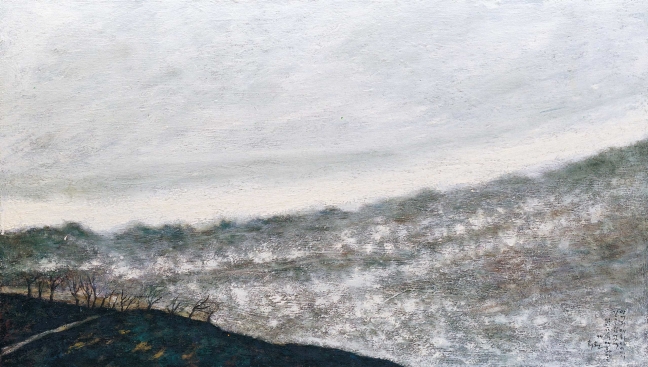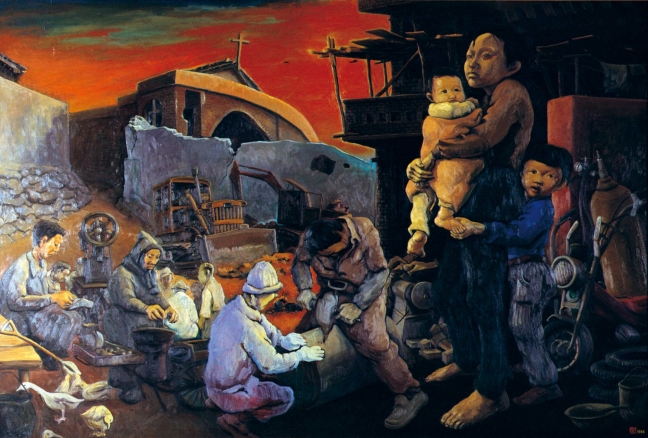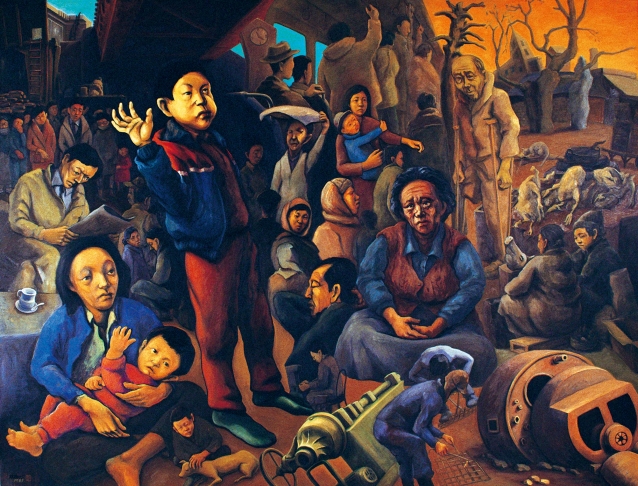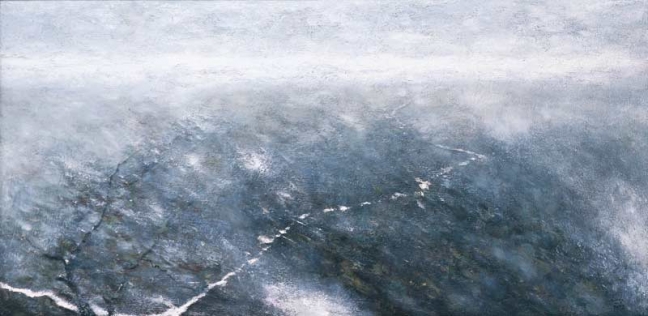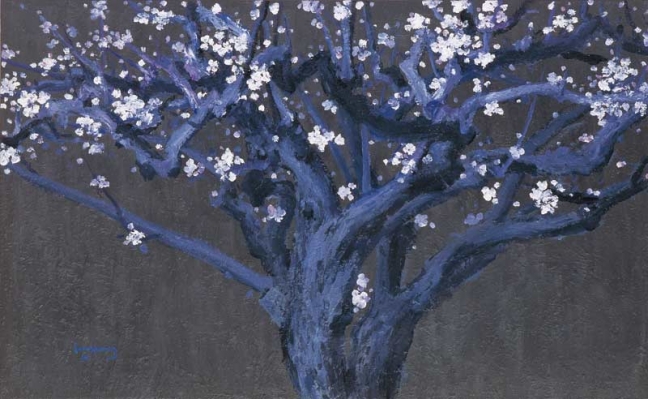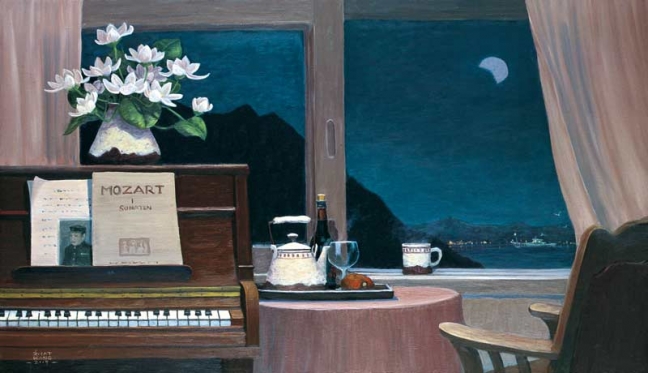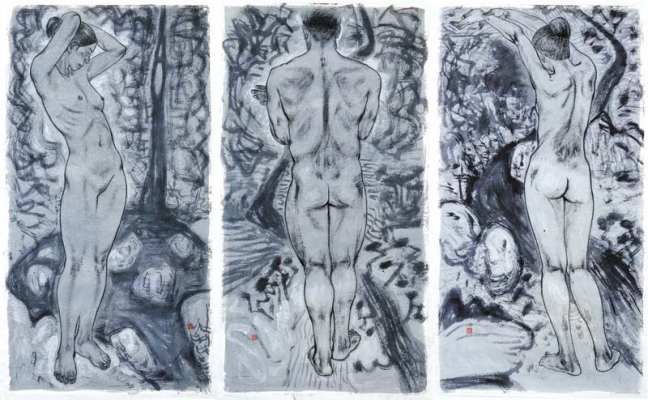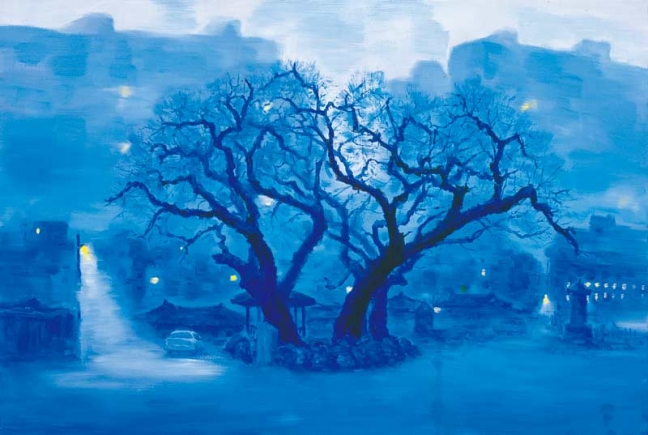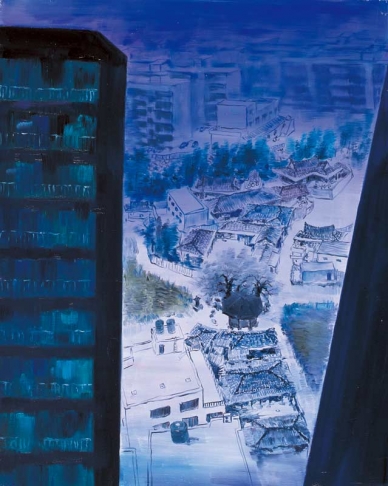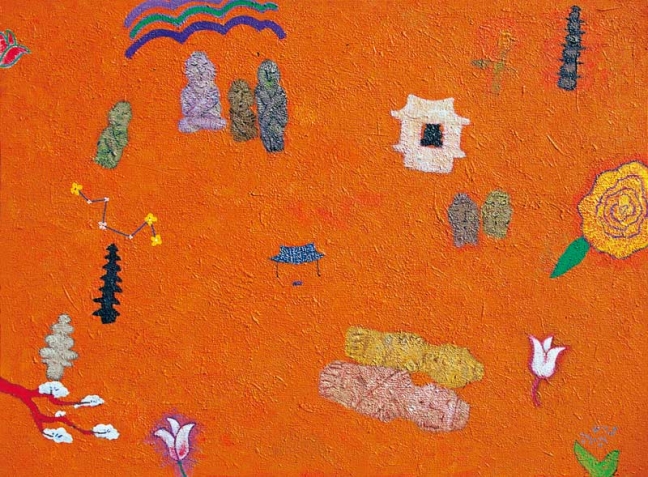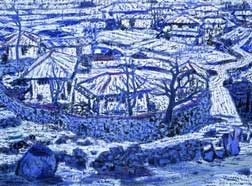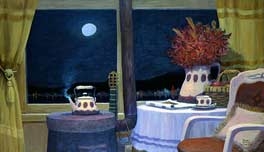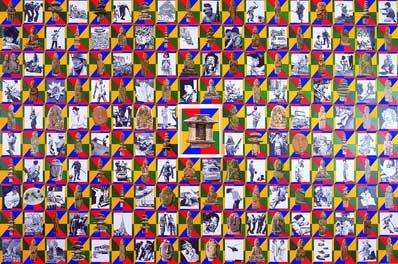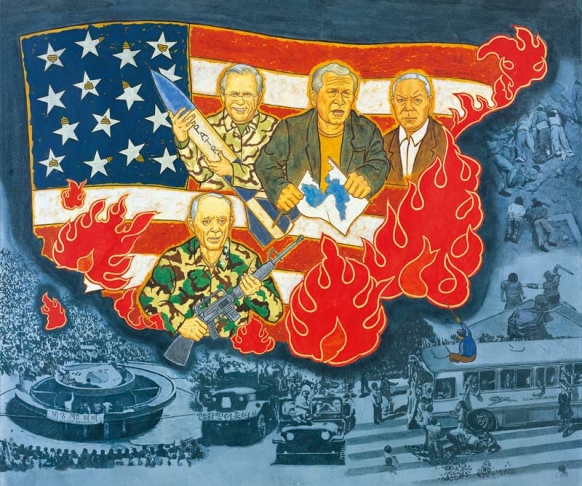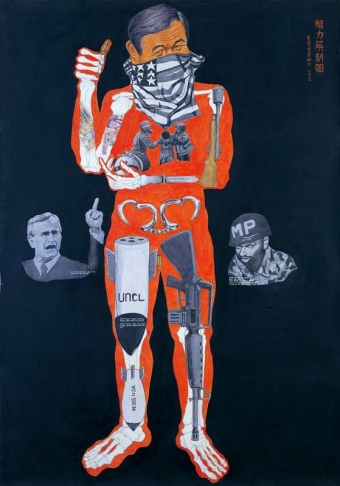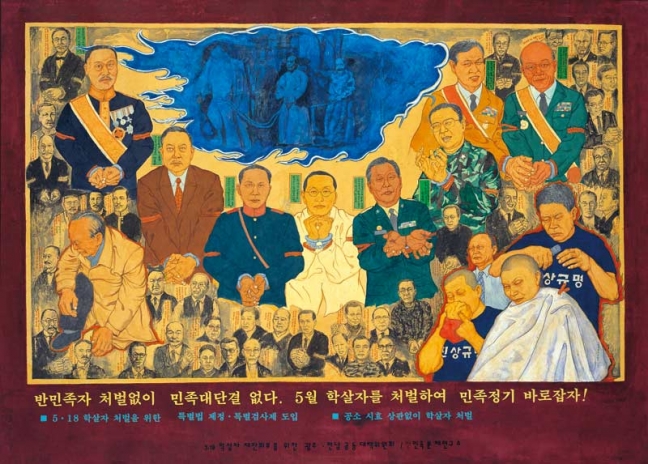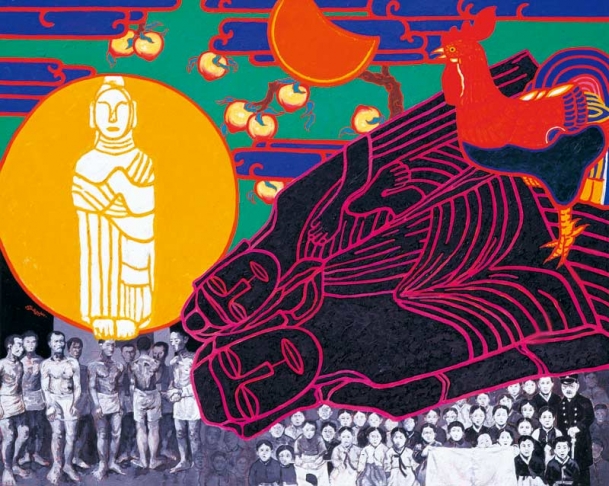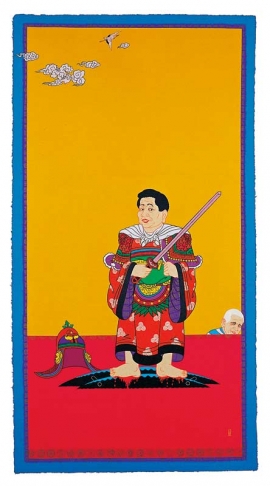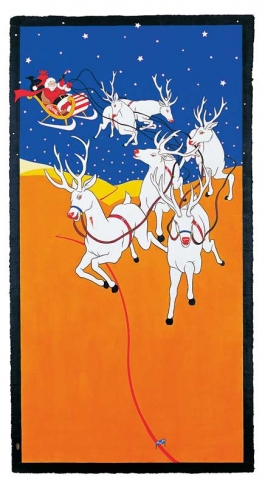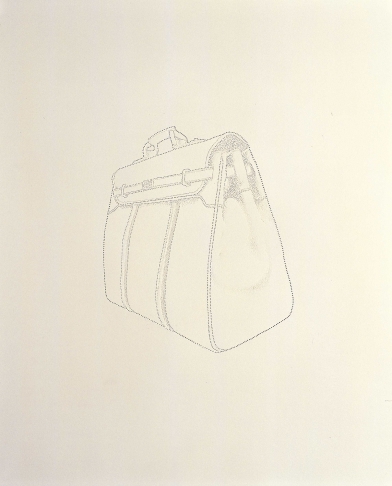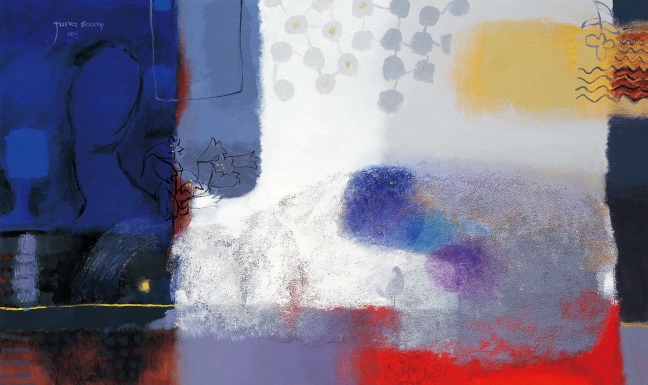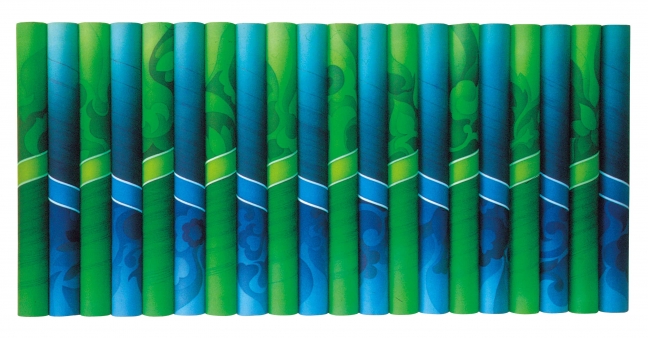Reflection Korea Contemporary Art
2006.06.16~2006.08.13
09:00 - 17:00
Essay Chae, Jongkee (Chief Curator, Gwangju Art Museum) The exhibition of "Scylla and Charybdis in Love: The Challenges Facing Contemporary Taiwanese Artists" was held in the Gwangju Art Museum in 2004, jointly sponsored by the National Taiwan Museum of Fine Arts, Kuandu Museum of Fine Arts, and the Gwangju Art Museum. This exhibition is planned as a part of the exchange program. This exhibition, entitled
Reflection” will feature works of 31 Korean artists in their 40s and 50s. It will be held at the National Taiwan Museum of Fine Arts and Kuandu Museum of Fine Arts. Most of the artists are from Gwangju, the cultural capital of Korea, and they are actively participating in exhibitions not only in Korea, but also abroad. Korean society changes so rapidly that it is hard to catch up. It is closely related with the international milieu. As international exchange becomes more frequent, a new age of multiplicity and hybridity has developed. Such a symptom is very acute in Korea, where the rate of internet users has reached to the top of the world in the last ten years. Many artists around the world including Koreans struggle to reestablish their view of the art and find a paradigm through various experiments. The works of the artists in this exhibition clearly show this situation in Korea. The life and history of the people in this area, where the conservative and radical ideas interact creatively, is reflected in them. Gwangju is at the center of Korean culture. The success of both the Gwangju Biennale and the Gwangju Design Biennale which is launched in 2005 confirms this. The city has been the town of refined taste in which people drink tea and enjoy music. Because Gwangju has been a place of exile for learned scholars and artists, many artists are naturally from this region. The features of woman artists and the works dealing with May 18 Gwangju Democratic Uprising is one of the most remarkable characteristics of this exhibition. Only about thirty years has passed since serious discussion of women’s rights has begun in Korea. Since the mid 1990s, a serious of legal acts has been made to ensure their rights of who are suffering under the parochial and patrilineal society. In Korea, the women's movement is closely related with the democratic movement, which has been active for the last thirty years. The democratic movement was not merely a resistance against dictatorship; it also worked as a kind of detonator to release oppressed feelings. Korean women, who have endured the oppression of male authority, took advantage of this change of the society and began to broaden their scope of social participation. It is evident in the bold mode of expression the woman artists adopt to get away from the traditional styles. The Association for Woman Artists in Gwangju goes hand in hand with the women's movement overall. Their energetic activity reflects not only their enhanced legal status, but also a better economic situation. Visitors to the first room in the gallery will be able to feel the aesthetic view and sensibility of Korean women who are still struggling for further extension of their human rights. Circumstances play a major role in the creation of a work of art. As if to support these words, the social and political milieu of Korea stimulates artists to change constantly. Though the circumstances are not favorable to concentrate on their work, many Korean artists are burning with their zeal for the art. The male artists in this exhibition are in their 40s and 50s, but their enthusiasm for their works is well beyond their age. Even while they teach future artists in the classrooms and studios, they continue to create artworks. The wide variety of their materials and expression technique show the unlimited possibility of Korean art. Most of them are working in Gwangju, while they are endeavoring to find their own identity as artists. This is done in relation to other famous artists whose works they see at the Gwangju Biennale. You can easily sense their passion in the exhibition hall. The May 18 Gwangju Democratic Uprising in 1980 has instigated the artists in Gwangju to found a new genre called "Minjung Art." Historically, Gwangju has been the center of the radical movement, and it has confirmed the pride of the city as a cultural capital of the Korea. Visitors will see in the last room how the artists have sublimated the historical unfurling into the artistic creation. Their works are more powerful than photos in delivering the emotion of the people of the time because they have experienced the uprising on the spot. They will serve as a good material to think about the relationship between the artistic activity and social event. In this information age of the 21st century, Korea is planning to establish an ubiquitous environment. In this exhibition, you will see how Korean artists respond to this kind of unprecedented change and what they suggest as a koan for the future. Personally, I hope that this exchange problem can work as a kind of bridge between Taiwan and Korea. Perhaps art can heal the severance of diplomatic relations involving the two countries and also promote mutual understanding.
Reflection” will feature works of 31 Korean artists in their 40s and 50s. It will be held at the National Taiwan Museum of Fine Arts and Kuandu Museum of Fine Arts. Most of the artists are from Gwangju, the cultural capital of Korea, and they are actively participating in exhibitions not only in Korea, but also abroad. Korean society changes so rapidly that it is hard to catch up. It is closely related with the international milieu. As international exchange becomes more frequent, a new age of multiplicity and hybridity has developed. Such a symptom is very acute in Korea, where the rate of internet users has reached to the top of the world in the last ten years. Many artists around the world including Koreans struggle to reestablish their view of the art and find a paradigm through various experiments. The works of the artists in this exhibition clearly show this situation in Korea. The life and history of the people in this area, where the conservative and radical ideas interact creatively, is reflected in them. Gwangju is at the center of Korean culture. The success of both the Gwangju Biennale and the Gwangju Design Biennale which is launched in 2005 confirms this. The city has been the town of refined taste in which people drink tea and enjoy music. Because Gwangju has been a place of exile for learned scholars and artists, many artists are naturally from this region. The features of woman artists and the works dealing with May 18 Gwangju Democratic Uprising is one of the most remarkable characteristics of this exhibition. Only about thirty years has passed since serious discussion of women’s rights has begun in Korea. Since the mid 1990s, a serious of legal acts has been made to ensure their rights of who are suffering under the parochial and patrilineal society. In Korea, the women's movement is closely related with the democratic movement, which has been active for the last thirty years. The democratic movement was not merely a resistance against dictatorship; it also worked as a kind of detonator to release oppressed feelings. Korean women, who have endured the oppression of male authority, took advantage of this change of the society and began to broaden their scope of social participation. It is evident in the bold mode of expression the woman artists adopt to get away from the traditional styles. The Association for Woman Artists in Gwangju goes hand in hand with the women's movement overall. Their energetic activity reflects not only their enhanced legal status, but also a better economic situation. Visitors to the first room in the gallery will be able to feel the aesthetic view and sensibility of Korean women who are still struggling for further extension of their human rights. Circumstances play a major role in the creation of a work of art. As if to support these words, the social and political milieu of Korea stimulates artists to change constantly. Though the circumstances are not favorable to concentrate on their work, many Korean artists are burning with their zeal for the art. The male artists in this exhibition are in their 40s and 50s, but their enthusiasm for their works is well beyond their age. Even while they teach future artists in the classrooms and studios, they continue to create artworks. The wide variety of their materials and expression technique show the unlimited possibility of Korean art. Most of them are working in Gwangju, while they are endeavoring to find their own identity as artists. This is done in relation to other famous artists whose works they see at the Gwangju Biennale. You can easily sense their passion in the exhibition hall. The May 18 Gwangju Democratic Uprising in 1980 has instigated the artists in Gwangju to found a new genre called "Minjung Art." Historically, Gwangju has been the center of the radical movement, and it has confirmed the pride of the city as a cultural capital of the Korea. Visitors will see in the last room how the artists have sublimated the historical unfurling into the artistic creation. Their works are more powerful than photos in delivering the emotion of the people of the time because they have experienced the uprising on the spot. They will serve as a good material to think about the relationship between the artistic activity and social event. In this information age of the 21st century, Korea is planning to establish an ubiquitous environment. In this exhibition, you will see how Korean artists respond to this kind of unprecedented change and what they suggest as a koan for the future. Personally, I hope that this exchange problem can work as a kind of bridge between Taiwan and Korea. Perhaps art can heal the severance of diplomatic relations involving the two countries and also promote mutual understanding.
Essay Chae, Jongkee (Chief Curator, Gwangju Art Museum) The exhibition of "Scylla and Charybdis in Love: The Challenges Facing Contemporary Taiwanese Artists" was held in the Gwangju Art Museum in 2004, jointly sponsored by the National Taiwan Museum of Fine Arts, Kuandu Museum of Fine Arts, and the Gwangju Art Museum. This exhibition is planned as a part of the exchange program. This exhibition, entitled
Reflection” will feature works of 31 Korean artists in their 40s and 50s. It will be held at the National Taiwan Museum of Fine Arts and Kuandu Museum of Fine Arts. Most of the artists are from Gwangju, the cultural capital of Korea, and they are actively participating in exhibitions not only in Korea, but also abroad. Korean society changes so rapidly that it is hard to catch up. It is closely related with the international milieu. As international exchange becomes more frequent, a new age of multiplicity and hybridity has developed. Such a symptom is very acute in Korea, where the rate of internet users has reached to the top of the world in the last ten years. Many artists around the world including Koreans struggle to reestablish their view of the art and find a paradigm through various experiments. The works of the artists in this exhibition clearly show this situation in Korea. The life and history of the people in this area, where the conservative and radical ideas interact creatively, is reflected in them. Gwangju is at the center of Korean culture. The success of both the Gwangju Biennale and the Gwangju Design Biennale which is launched in 2005 confirms this. The city has been the town of refined taste in which people drink tea and enjoy music. Because Gwangju has been a place of exile for learned scholars and artists, many artists are naturally from this region. The features of woman artists and the works dealing with May 18 Gwangju Democratic Uprising is one of the most remarkable characteristics of this exhibition. Only about thirty years has passed since serious discussion of women’s rights has begun in Korea. Since the mid 1990s, a serious of legal acts has been made to ensure their rights of who are suffering under the parochial and patrilineal society. In Korea, the women's movement is closely related with the democratic movement, which has been active for the last thirty years. The democratic movement was not merely a resistance against dictatorship; it also worked as a kind of detonator to release oppressed feelings. Korean women, who have endured the oppression of male authority, took advantage of this change of the society and began to broaden their scope of social participation. It is evident in the bold mode of expression the woman artists adopt to get away from the traditional styles. The Association for Woman Artists in Gwangju goes hand in hand with the women's movement overall. Their energetic activity reflects not only their enhanced legal status, but also a better economic situation. Visitors to the first room in the gallery will be able to feel the aesthetic view and sensibility of Korean women who are still struggling for further extension of their human rights. Circumstances play a major role in the creation of a work of art. As if to support these words, the social and political milieu of Korea stimulates artists to change constantly. Though the circumstances are not favorable to concentrate on their work, many Korean artists are burning with their zeal for the art. The male artists in this exhibition are in their 40s and 50s, but their enthusiasm for their works is well beyond their age. Even while they teach future artists in the classrooms and studios, they continue to create artworks. The wide variety of their materials and expression technique show the unlimited possibility of Korean art. Most of them are working in Gwangju, while they are endeavoring to find their own identity as artists. This is done in relation to other famous artists whose works they see at the Gwangju Biennale. You can easily sense their passion in the exhibition hall. The May 18 Gwangju Democratic Uprising in 1980 has instigated the artists in Gwangju to found a new genre called "Minjung Art." Historically, Gwangju has been the center of the radical movement, and it has confirmed the pride of the city as a cultural capital of the Korea. Visitors will see in the last room how the artists have sublimated the historical unfurling into the artistic creation. Their works are more powerful than photos in delivering the emotion of the people of the time because they have experienced the uprising on the spot. They will serve as a good material to think about the relationship between the artistic activity and social event. In this information age of the 21st century, Korea is planning to establish an ubiquitous environment. In this exhibition, you will see how Korean artists respond to this kind of unprecedented change and what they suggest as a koan for the future. Personally, I hope that this exchange problem can work as a kind of bridge between Taiwan and Korea. Perhaps art can heal the severance of diplomatic relations involving the two countries and also promote mutual understanding.
Reflection” will feature works of 31 Korean artists in their 40s and 50s. It will be held at the National Taiwan Museum of Fine Arts and Kuandu Museum of Fine Arts. Most of the artists are from Gwangju, the cultural capital of Korea, and they are actively participating in exhibitions not only in Korea, but also abroad. Korean society changes so rapidly that it is hard to catch up. It is closely related with the international milieu. As international exchange becomes more frequent, a new age of multiplicity and hybridity has developed. Such a symptom is very acute in Korea, where the rate of internet users has reached to the top of the world in the last ten years. Many artists around the world including Koreans struggle to reestablish their view of the art and find a paradigm through various experiments. The works of the artists in this exhibition clearly show this situation in Korea. The life and history of the people in this area, where the conservative and radical ideas interact creatively, is reflected in them. Gwangju is at the center of Korean culture. The success of both the Gwangju Biennale and the Gwangju Design Biennale which is launched in 2005 confirms this. The city has been the town of refined taste in which people drink tea and enjoy music. Because Gwangju has been a place of exile for learned scholars and artists, many artists are naturally from this region. The features of woman artists and the works dealing with May 18 Gwangju Democratic Uprising is one of the most remarkable characteristics of this exhibition. Only about thirty years has passed since serious discussion of women’s rights has begun in Korea. Since the mid 1990s, a serious of legal acts has been made to ensure their rights of who are suffering under the parochial and patrilineal society. In Korea, the women's movement is closely related with the democratic movement, which has been active for the last thirty years. The democratic movement was not merely a resistance against dictatorship; it also worked as a kind of detonator to release oppressed feelings. Korean women, who have endured the oppression of male authority, took advantage of this change of the society and began to broaden their scope of social participation. It is evident in the bold mode of expression the woman artists adopt to get away from the traditional styles. The Association for Woman Artists in Gwangju goes hand in hand with the women's movement overall. Their energetic activity reflects not only their enhanced legal status, but also a better economic situation. Visitors to the first room in the gallery will be able to feel the aesthetic view and sensibility of Korean women who are still struggling for further extension of their human rights. Circumstances play a major role in the creation of a work of art. As if to support these words, the social and political milieu of Korea stimulates artists to change constantly. Though the circumstances are not favorable to concentrate on their work, many Korean artists are burning with their zeal for the art. The male artists in this exhibition are in their 40s and 50s, but their enthusiasm for their works is well beyond their age. Even while they teach future artists in the classrooms and studios, they continue to create artworks. The wide variety of their materials and expression technique show the unlimited possibility of Korean art. Most of them are working in Gwangju, while they are endeavoring to find their own identity as artists. This is done in relation to other famous artists whose works they see at the Gwangju Biennale. You can easily sense their passion in the exhibition hall. The May 18 Gwangju Democratic Uprising in 1980 has instigated the artists in Gwangju to found a new genre called "Minjung Art." Historically, Gwangju has been the center of the radical movement, and it has confirmed the pride of the city as a cultural capital of the Korea. Visitors will see in the last room how the artists have sublimated the historical unfurling into the artistic creation. Their works are more powerful than photos in delivering the emotion of the people of the time because they have experienced the uprising on the spot. They will serve as a good material to think about the relationship between the artistic activity and social event. In this information age of the 21st century, Korea is planning to establish an ubiquitous environment. In this exhibition, you will see how Korean artists respond to this kind of unprecedented change and what they suggest as a koan for the future. Personally, I hope that this exchange problem can work as a kind of bridge between Taiwan and Korea. Perhaps art can heal the severance of diplomatic relations involving the two countries and also promote mutual understanding.
